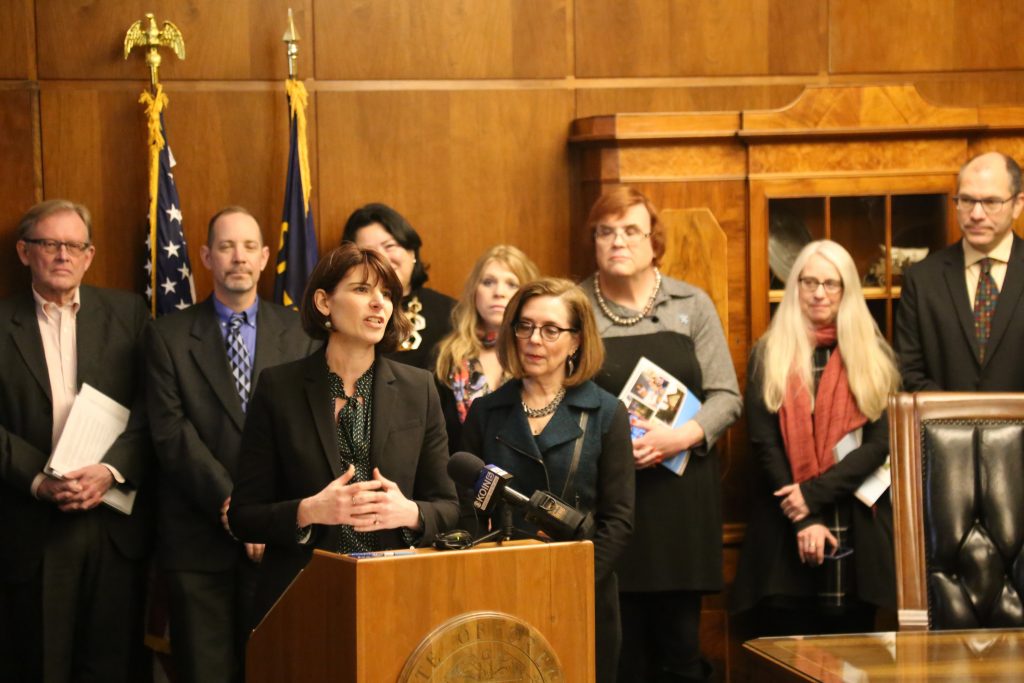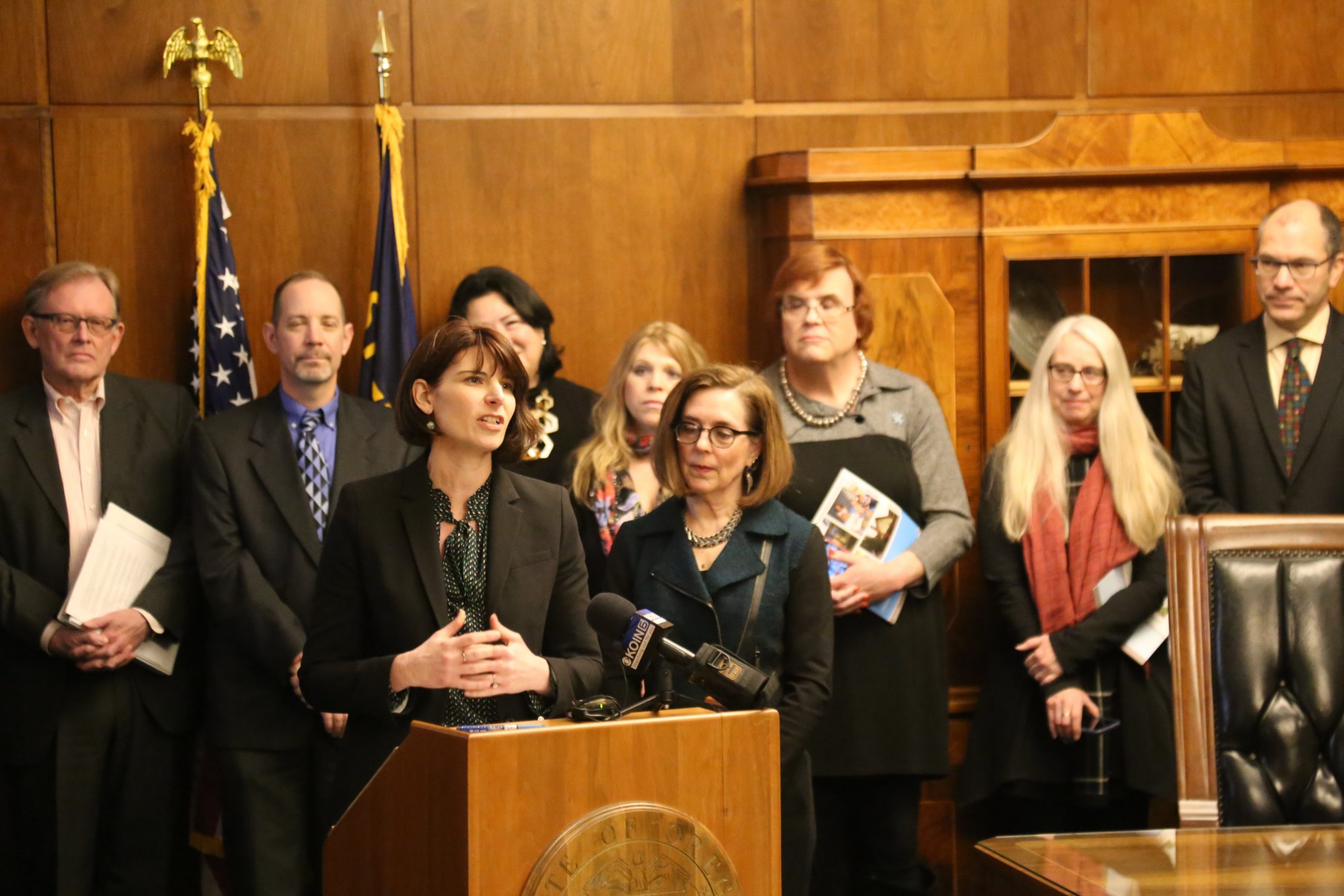When Oregon Housing and Community Services (OHCS) published its first ever Statewide Housing Plan in 2019, the housing finance agency (HFA) could not have imagined the challenging landscape it would be navigating in 2020 or the new level of urgency the plan’s priorities – affordable rental housing, racial justice, homelessness, homeownership, permanent supportive housing and rural communities – would take on in the midst of a global pandemic.
OHCS is responsible for providing financial and operational support across the state to create and preserve opportunities for quality, affordable housing. OHCS administers a wide range of programs, partnering with state government agencies and local organizations, and engages leaders to develop integrated statewide policy that addresses poverty and creates opportunity for Oregonians. A “one stop shop” for Oregon housing, OHCS is tasked with stewardship, compliance monitoring, and asset management as it oversees funds from both federal and state resources.
The National Housing Conference spoke to OHCS Executive Director Margaret Salazar to discuss how this agile HFA, with an exceptionally broad mandate, was able to react and respond to a dramatic spike in housing-related need in the wake of COVID-19. Salazar explained how the challenges the organization faced in recent months have deepened OHCS’s commitment to sustainable housing and shined a bright light on the need for culturally responsive partners that deliver a positive and equitable impact in Oregonians’ lives.

Has COVID-19 impacted the priorities established in the Statewide Housing Plan?
OHCS’s five-year Statewide Housing Plan was the result of two years of planning and listening tours across Oregon’s diverse communities – both large and small – including coastal villages, urban centers, “wheat country” and Portland’s suburbs. The plan lays out how we will create more stable housing opportunities and highlights important priorities, including advancing equity and racial justice, ending homelessness, investing in permanent supportive housing, reducing the cost burden for low-income renters, helping more households achieve and maintain homeownership, and responding to the unique housing needs of rural communities.
Each and every one of these priorities took on new meaning in 2020. From the challenge of avoiding homelessness and providing safe congregate housing during a pandemic to ensuring newly appropriated emergency funds were distributed quickly and equitably, OHCS’s commitment to the statewide housing plan was put to the test. The past couple of months have certainly illuminated areas for improvement, such as finding better solutions for agricultural workers who require emergency housing close to their place of employment in sparsely populated rural areas. However, just as important, COVID-19 has underscored how critical these priorities really are to keeping Oregonian families and individuals safe and secure – regardless of what’s happening in the world.
How does the COVID-19 Has COVID-19 changed OHCS’s relationships with its partners?
We partner with many state government agencies and service providers across our programs for affordable rental housing development, asset building, asset management, energy and weatherization, homeownership, housing stabilization, homelessness prevention and manufactured homes. COVID-19 served to deepen existing relationships with partners in the state government, while also fostering stronger relationships with a diverse group of organizations.
As a part of our COVID-19 outreach and response, we collaborated with dozens of organizations, ranging from the state’s largest farm worker union to the Oregon Health Authority, to ensure the most comprehensive and coordinated supportive service delivery possible. The pandemic also served as a reminder of the value of good relationships with the state legislature and governor’s office. In developing the Statewide Housing Plan, we at OHCS worked closely with Oregon Governor Kate Brown and laid the groundwork for the state legislature’s support of sustainable housing through advocacy. Following the outbreak of COVID-19, these relationships made it possible for OHCS to easily communicate needs on the ground and obtain the necessary funding.
How did OHCS maintain communication with stakeholders during the pandemic?
Effective communication was key to OHCS’s response to the pandemic. At the onset of COVID-19, we instituted a weekly communication call via Zoom, where program leaders were able to provide the latest updates, disseminate information and answer questions. Managing the deluge of government actions, such as executive orders, challenged the organization’s ability to keep the website up-to-date, but we prioritized providing as much information as possible to our partners.
With our employees working remotely, we worked just as hard to maintain communications with our internal team. Recognizing that many employees are already disconnected from the people they serve – because we act primarily as a program intermediary and facilitator – we had to reflect on how to keep employees engaged and connected in our mission.
How has OHCS managed the distribution of COVID-19 funding?
We were fortunate to receive significant funding from both the CARES Act and the state, with more than $200 million in housing stabilization and homeless services resources. This includes $26 million in project-based assistance to pay off arrears in our regulated affordable housing portfolio, $3.5 million to provide non-congregate, safe sheltering for Oregon’s agricultural workers and $56.2 million in CARES Act Emergency Solutions Grant funding.
Knowing that homeowners, renters and households across the state were in dire need of immediate financial and housing support, we tried to carefully balance the need for rapid distribution of aid and the importance of equitable administration of that aid. We have worked to educate policymakers on the time it takes to assess the capability of partners on the ground and the access to support they provide across different communities. While remote work has made such assessments even more challenging, we are requiring our partners to collect data disaggregated by race and ethnicity in order to monitor the impact of program spending.
How has OHCS been impacted by ongoing demonstrations in Portland?
Portland has been an epicenter for demonstrations against racial injustice and police brutality, seeing more than 100 days of protests. Even before the widespread unrest seen across the U.S. in the wake of George Floyd’s death, OHCS recognized that racial justice was a priority in need of greater attention.
The Statewide Housing Plan rightly acknowledges that “ongoing discrimination in the housing market combined with systemic barriers to economic mobility, wealth creation and opportunities impede progress toward parity.” In response to this call to action, we committed to adopting an intentional, data-driven approach with our partners to reduce disparities in housing and social services. And although this commitment has proven more challenging in a rapid funding and remote work environment, we have continued to layer a racial equity perspective onto our program administration.
When we had to submit our 2021 budget request, for example, we conducted a racial justice assessment for its proposals. For current outcome-oriented contracts, we have asked partners to demonstrate how they are culturally responsive and working to serve all demographics equally. Understanding that it will take time for all partners to demonstrate such an impact, we have laid out a three-year plan to work with our partners at the end of which organizations will have to show they are culturally responsive to receive future funding.
How is OHCS serving rural communities?
Oregon is an incredibly diverse state in terms of ethnicity, occupation, geography and community type, and during our COVID-19 response, we have paid close attention to the unique challenges facing even the state’s smallest communities. The needs of the state’s agriculture workers living in rural areas were quickly communicated to us through one of our partner organizations early in the pandemic as rent collections declined by 40%.
We immediately stepped in to support emergency housing needs in the agricultural community. We partnered with the Oregon Department of Agriculture to determine the best way to provide non-congregate housing close to places of employment. Drawing on new guidance from Oregon’s Occupational Safety and Health Administration, we developed a way to maintain social distancing through bunk-style housing. We also partnered with other state agencies to extend hotel vouchers for agricultural workers and in some cases install trailers on farm properties.
How has COVID-19 changed OHCS as an organization?
Like many housing organizations, COVID-19 has reaffirmed our understanding of the critical importance of stable, secure and sustainable housing for all households. As the pandemic laid bare gaps in services, funding and planning across the country, OHCS finds itself a changed agency, more committed than ever to overcoming big challenges to deliver meaningful progress in the areas of racial equity, homelessness and affordable housing.
As we look to 2021 and consider what a post-pandemic landscape will bring, we recognize that going back to the way things used to operate is not an option. Our experiences during COVID-19 reveal just how essential it is to make individual needs central to the delivery of all social services, from workforce benefits to health and housing. As we move forward, we plan to develop even stronger interagency partnerships at the federal and state level to build a social safety net that truly meets Oregonians wherever they are at.
